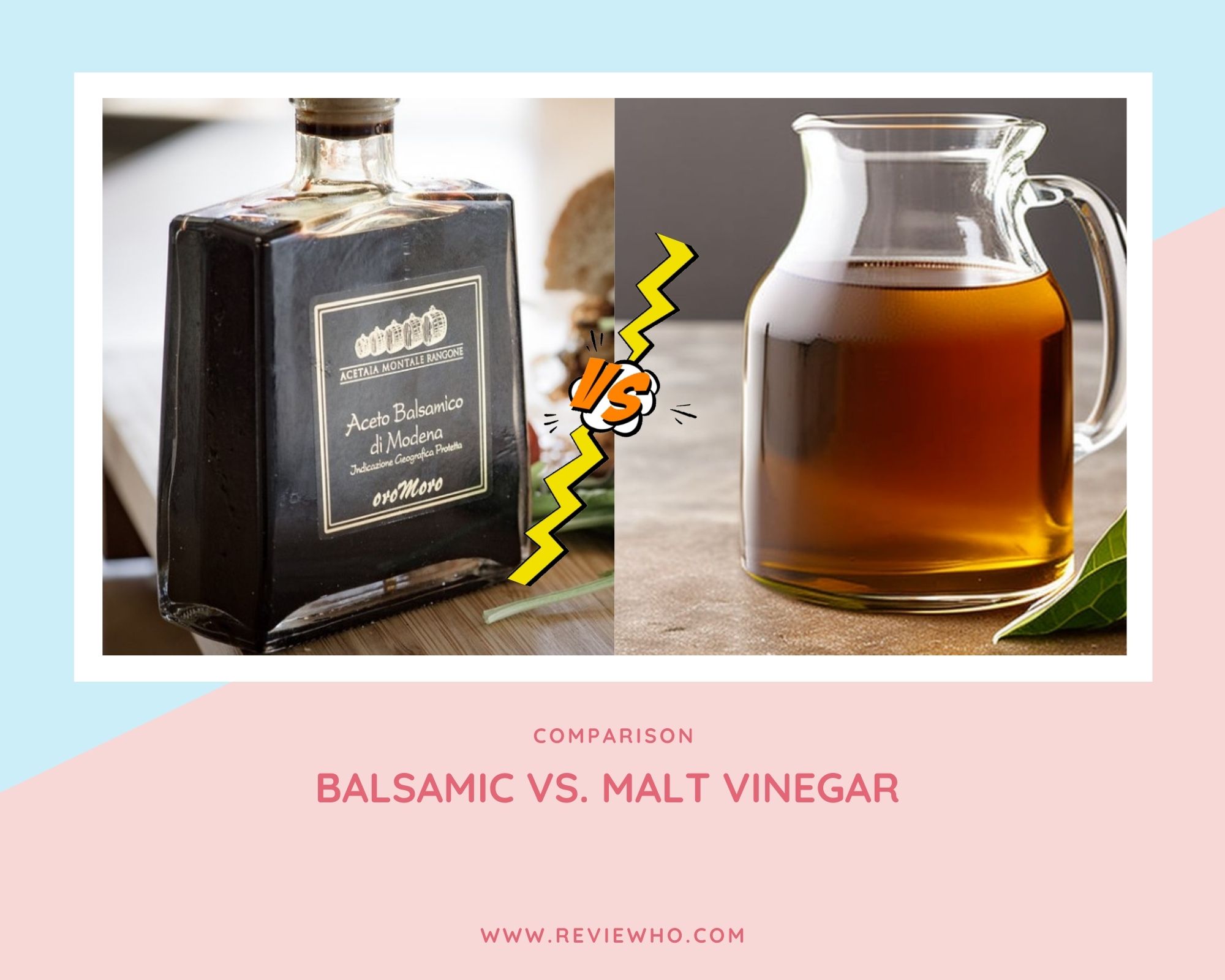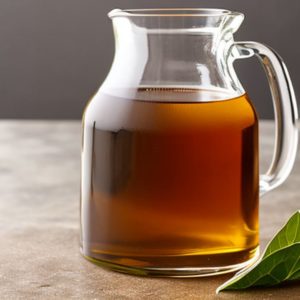The market has different types of vinegar. They are produced from different types of natural products. In some, fruits or grains are used. Their sugars are fermented so that they produce alcohol. This is then transformed into acetic acid.
Balsamic and malt vinegar are two popular vinegar types. These are great types that improve the flavor of dishes. Is malt vinegar and balsamic vinegar the same?
This is a post that aims to answer this question. We will be looking at a detailed balsamic vs. malt vinegar comparison.
Here we go;
What is Balsamic Vinegar
This is a type of vinegar native to Italy. It is syrupy, brown, and has a rich flavor. The traditional type of balsamic vinegar is made with certain types of grapes. After that, it is allowed to age for more than 12 years, normally to around 25 years.
Normally, these are used for salad dressings. They are drizzled over salads. Sometimes you can enjoy it as a drink.
What is Malt Vinegar
Malt vinegar is made using malted barley. First, the malted barley is fermented to produce ale, which is then turned into vinegar.
You can age this type of vinegar in oak barrels to produce a strong flavor. This normally takes months.
The first malt vinegar was produced hundreds of years ago in Britain. Earlier, malt vinegar was made using beers that turned sour.
Malt vinegar is mainly used in Canadian and British cuisine. In most cases, it is used on chips and fish.
Balsamic vs. Malt Vinegar
Now, let’s get into a comparison between these two.
Production
Balsamic vinegar is made from white grapes’ must. That must is put in wooden barrels. In the barrels, it ferments and alcohol is produced. After that, acetic acid is produced. As it continues to age, balsamic vinegar increases in concentration, and a unique flavor develops.
Malt vinegar, on the other hand, is made using malted barley. Malted barley is first turned to beer, after which it is turned to vinegar. For the barley to malt, it has to be soaked in water so that it germinates. During germination, there are enzymes released. These enzymes transform the starch into a sugar called maltose.
After the malted grains are dried, the fermentation process comes next. This causes alcohol to form and it is then turned to vinegar. For the conversion to alcohol then vinegar, yeast is used together with acetic acid bacteria.
Taste
Malt vinegar features a very strong flavor. It can be described as nutty. The taste is somewhat similar to malted ale.
Balsamic vinegar, on the other hand, has a certain mix of acidity and sweetness. There are also chances that you will have a hint of wood, from the cask in which it is aged.
Color
Balsamic vinegar can be described as a thick syrup. It features a brown color. As it continues to age, a darker color develops.
Malt vinegar also has a brown color. But the color can change from light to dark brown. For it to get a darker color, caramel is normally added. There is a variety of malt vinegar that has a clear color. It does not have a brown color.
Uses
You can drizzle balsamic vinegar on salads to use as a dressing. It is also possible to use it in marinades.
On the other hand, malt vinegar is used on chips and fish as a condiment. You can also choose to add it to pickling mixtures.
Nutrition
Is balsamic vinegar healthier than malt vinegar? Well, malt vinegar has higher levels of calcium and phosphorus, while balsamic vinegar has higher levels of iron. Additionally compared to malt, balsamic vinegar features a lot less saturated fat. Balsamic has 0g of saturated fat, while malt has 1.833 grams.
Substitution
Can you use balsamic vinegar instead of malt vinegar? Well, balsamic vinegar is somewhat different in a range of ways from each other. Fortunately, if you do not have some malt vinegar, you can use balsamic vinegar. You can use them in a one-to-one ratio if you need to substitute them.
Conclusion
While these two are amazing types of vinegar, they have certain differences from each other. Regardless, each has certain specific advantages. While you can use one instead of the other, we would recommend that you use them in the way they are meant to. However, if you do not have some balsamic vinegar, go for malt vinegar.
Also, read: Difference between Black Vinegar and Rice Vinegar
Feel free to share your observations with me in the comments section!
Also, if you find the information in this post useful, be sure to share this post with your friends on Facebook, Twitter, and Pinterest!







